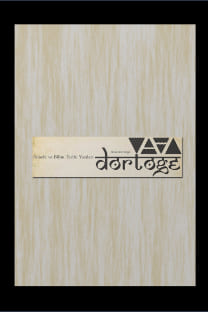Michel Foucault’nun Magritte Yorumu ve Sözcük Nesne Kopukluğu
Michel Foucault’s Interpretation of Magritte and the Detachment (Separation) of Word and Object
Word, object, image, resemblance, similitude,
___
- Alden, Todd, (1999). The Essential René Magritte, New York, The Wonderland Press.
- Bowman, Russell, (1985). “Words and Images: A Persistent Paradox”, Art Journal, Volume 45, No. 4, The Visionary Impulse: An American Tendency, Published by: College Art Association, s. 335-343.
- Durham, Scott, (1993). “From Magritte to Klossowski: The Simulacrum, between Painting and Narrative”, October, Volume 64, Published by: The MIT Press, s. 16-33.
- Foucault, Michel, (1999). Bilginin Arkeolojisi, Çev.: Veli Urhan, İstanbul, Birey Yayıncılık.
- Foucault, Michel, (2001). Bu Bir Pipo Değildir, Çev.: Selahattin Hilav, İstanbul, Yapı Kredi Yayınları.
- Foucault, Michel, (2006). Kelimeler ve Şeyler, Çev.: Mehmet Ali Kılıçbay, Ankara, İmge Kitabevi.
- Magritte, René, (1929). “Les Mots et les Images”, La Révolution surréaliste, 12: 32–33.
- Margolis, Joseph, (1984). “Review: This is not a Pipe by Michel Foucault”, The Journal of Aesthetics and Art Criticism, Volume 43, No. 2, Published by: Blackwell Publishing on behalf of the American Society for Aesthetics, s. 224-225.
- Porter, James E., (1986). “This is not a Review of Foucault’s This is not a Pipe”, Rhetoric Review, Volume 4, No. 2, Published by: Lawrence Erlbaum Associates, s. 210-219.
- Ross, Leslie, (2014). Language in the Visual Arts, The Interplay of Text and Imagery, North Carolina, McFarland and Company, Inc. Publishers.
- Zalman, Sandra, (2015). Consuming Surrealism in American Culture, London and New York, Routledge.
- ISSN: 2146-7064
- Yayın Aralığı: Yılda 2 Sayı
- Başlangıç: 2012
- Yayıncı: Nobel Akademik Yayıncılık
Doğa Bilimlerinin Nesnellik Sorunu
Burak Can SERDAR, Tarık Tuna GÖZÜTOK, Şafak URAL, Yerel Süreli YAYIN, Nevzat ARGUN, Yazı İşleri MÜDÜRÜ, Hilal Süslü ARGUN, Ercan SALĞAR, Deniz KUNDAKÇI, Posta Çeki HESABI, İnan KALAYCIOĞULLARI, F Jamil RAGEP, Kenan GÜRSOY, İlber ORTAYLI, Melek Dosay GÖKDOĞAN, Feza GÜNERGUN, Sabri BÜYÜKDÜVENCİ, Hüseyin Gazi TOPDEMİR,
İbrahim Müteferrika ve Yeni Astronomi
İbrahim MÜTEFERRİKA, İnan KALAYCIOĞULLARI
Toplumsal Cinsiyet ve Bilim İlişkisi Üzerine Bir Değerlendirme
Seda ÖZSOY, Ümit ÖZTÜRK, Yakup KAHRAMAN
Portekiz’de çağdaş Bilim Tarihiyle İlgili Görüşler
Melek Dosay GÖKDOĞAN, Yavuz Selim DOKUMACI
Teknoloji ve Toplumsal Değişim İlişkisinin Sosyal İnşa Kuramı Bağlamında İncelenmesi
Nietzsche ve Benjamin’de Esrik Deneyim ya da ‘Rausch’ Üzerine
Bir Spekülatif Felsefenin Ana Hatları: çember ve Varolma(ma) Alanları
David Lewis’in Karşıt-Olgusal Bağlılık Kavramında Zamansal Asimetri Meselesi
Konya Örneği Bağlamında Tinsel Üretim ile Mekânın Karşılıklı Yapılandırıcı Etkilerinin İncelenmesi
